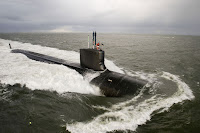Secretary of Defense Lloyd J. Austin III marked the 50th anniversary of America's All-Volunteer Force with a statement praising the dedication and commitment of those who have chosen to defend the nation. Since the end of the draft on July 1, 1973, the United States military has been filled solely by brave Americans who voluntarily step forward to protect the republic.
Secretary Austin acknowledged that transitioning to an All-Volunteer Force was a bold move, as no other military with such formidable capabilities had operated on a voluntary basis. However, history has proven the wisdom of relying on dedicated volunteers. The All-Volunteer Force has strengthened the armed forces, combining both moral and military power. It has successfully recruited and retained patriotic and talented individuals from diverse backgrounds, resulting in a more professional and effective Joint Force. Today, America's All-Volunteer Force stands as the strongest military in human history, setting the global standard for military professionalism.
The Secretary emphasized that the All-Volunteer Force not only produces exceptional soldiers, sailors, airmen, marines, and guardians but also nurtures leaders in various fields. Service members develop their skills while serving and contribute to society as doctors, mechanics, teachers, computer technicians, and more. Their knowledge and expertise are passed down to future generations, creating a legacy of service and excellence. The All-Volunteer Force demonstrates the extent of what Americans can achieve when they commit themselves to serving others, giving back to their communities, and safeguarding their country's security and justice.
Secretary Austin also reiterated the sacred obligation of the United States to care for every patriot who has worn the nation's uniform and their families. The commitment to providing support and assistance remains steadfast as the country pays tribute to every American who selflessly raises their hand to serve and protect the republic. The Secretary concluded by acknowledging that the service of the members of the All-Volunteer Force is a testament to their courage and to the power of democracy.
As the United States commemorates the 50th anniversary of the All-Volunteer Force, it is a time to reflect on the contributions and sacrifices made by the men and women who have freely chosen to defend their nation. Their dedication has built a military force unmatched in history and serves as a shining example to the world. The All-Volunteer Force stands as a testament to the strength, resilience, and unwavering commitment of the American people.





















